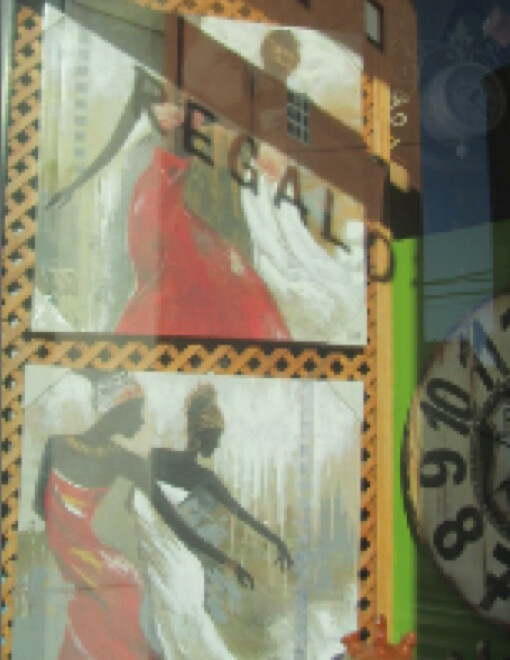
viernes, 31 de octubre de 2014
jueves, 30 de octubre de 2014
Seguimos en la Cima de la Cima
Un día caeremos a la Sima de la Sima, pero de momento estamos, según los índices objetivables, en la cima de la cima.
La red social ACADEMIA, "el Facebook de los universitarios", tiene más
de once millones de usuarios. Desde hace más de un mes estoy (según el
ránking automático de esta red) en su sector superior, o sea, en el 1 por mil de entre los usuarios más visitados.
Tengo este mes 3.788 visionados de documentos, y 2.709 visitantes
distintos. Seguidores y consultas totales figuran en la imagen abajo.
¿Entro en más detalles sobre quién está en ese uno por mil, y quién no?
Mejor no.
Deben ser éstos mis 15 minutos de
popularidad, si esto cuenta como popularidad. Si no cuenta, al menos son más
de 15 minutos, y de 15 días. Quede este pantallazo para acreditarlo, y
la copita de píxeles como merecido premio a mi carrera.
para ti la gloria ganada por mis méritos,
que yo sólo quiero que ciñas de buen grado
mi cabellera con laurel Délfico.
OTHELLO
—From The Oxford Companion to English Literature, ed. Margaret Drabble.
Othello, the Moor of Venice, a tragedy by *Shakespeare, written between 1602 and 1604 when it was performed before James I at Whitehall. It was first printed in quarto in 1622, and again in a different version in the *Folio of 1623. The story is taken from *Cinthio, which Shakespeare could have read in Italian or French.
The play's first act (which *Verdi's opera Otello omits) is set in Venice. Desdemona, the daughter of Brabantio, a Venetian senator, has secretly married Othello, a Moor in the service of the state. Accused before the duke and senators of having stolen Brabantio's daughter, Othello explains and justifies his conduct, and is asked by the Senate to lead the Venetian forces against the Turks who are about to attack Cyprus.
In the middle of a storm which disperses the Turkish fleet, Othello lands in Cyprus with Desdemona, Cassio, a yhoung Florentine, who helped him court his wife and whom he has now promoted to be his lieutenant, and Iago, an older soldier, bitterly resentful of being passed over for promotion, who now plans his revenge. Iago uses Roderigo, 'a gull'd Gentleman' in love with Desdemona, to fight with Cassio after he has got him drunk, so that Othello deprives him of his new rank. He then persuades Cassio to ask Desdemona to plead in his favour with Othello, which she warmly does. At the same time he suggests to Othello that Cassio is, and has been, Desdemona's lover, finally, arranging through his wife Emilia, who is Desdemona's waiting-woman, that Othello should see Cassio in possession of a handkerchief which he had given to his bride. Othello is taken in by Iago's promptings and in frenzied jealousy smothers Desdemona in her bed. Iago sets Roderigo to murder Cassio, but when Roderigo fails to to this Iago kills him and Emilia as well, after she has proved Desdemona's innocence to Othello. Emilia's evidence and letters found on Roderigo prove Iago's guilt; he is arrested, and Othello, having tried to stab him, kills himself.
According to *Rymer one of the play's morals was 'a warning to all good wives that they look well to their linen'. *Coleridge in a famous phrase described Iago's soliloquy at the end of I. iii as 'the motive-hunting of motiveless malignity'.
Revenge Tragedy
revenge tragedy, a dramatic genre that flourished in the late Elizabethan and Jacobean period, sometimes known as 'the tragedy of blood'. Kyd's *The Spanish Tragedy (c. 1587), a much-quoted prototype, helped to establish a demand for this popular form; later examples are Marlowe's *The Jew of Malta, Shakespeare's *Titus Andronicus, *The Revenger's Tragedy, and, most notably, *Hamlet; there are also strong revenge elements in *Webster. Common ingredients include the hero's quest for vengeance, often at the prompting of the ghost of a murdered kinsman or loved one; scenes of real or feigned insanity; a play-within-a-play; scenes in graveyards, severed limbs, scenes of carnage and mutilation, etc. Many of these items were inherited from Senecan drama, with the difference that in revenge tragedy violence was not reported but took place on stage: as Vendice in The Revenger's Tragedy rather baldly puts it, while in the process of slowly murdering the duke, 'when the bad bleeds, then is the tragedy good.' The revenge code also produced counter-attacks, as in *The Atheist's Tragedy, in Chapman's *The Revenge of Bussy d'Ambois, and again in Hamlet, in which the heroes refuse or hesitate to follow the convention.
The Revenge of Bussy d'Ambois, a tragedy by G. *Chapman, written 1610/11, printed 1613, a sequel to *Bussy D'Ambois.
Clermont D'Ambois, brother of Bussy, described by his close friend the duc de Guise as the ideal 'Senecal [i.e. stoical] man', gentle, noble, generous, and 'fix'd in himself', is urged by his brother's ghost to avenge his murder, but will only do so by the honourable method of a duel. He sends a challenge to Muntsurry, who reads it; urged again by the ghost, he introduces himself to Montsurry's house, forces him to fight, and kills him. He then learns of the assassination of the Guise, and, refusing to live amid 'all the horrors of the vicious time' as 'the slave of power', he kills himself. The hero's reluctance to exact revenge recalls certain aspects of *Hamlet (See also REVENGE TRAGEDY.)
The Revenger's Tragedy, a tragedy published anonymously in 1607, and from 1656 ascribed to *Tourneur; its authorship has been disputed since 1891, with some scholars defending the traditional attribution and others championing the rival claims of *Middleton and others.
The central character is Vendice (or Vindice), intent on revenging the death of his mistress, poisoned by the lecherous old duke. The court is a centre of vice and intrigue; the duchess's youngest son is convicted of rape, she herself seduces Spurio, the duke's bastard, and her two older sons, the duke's stepsons, plot against each other and against Lussurioso, the duke's heir. Vendice, disguised as Plato, appears to attempt to procure his own sister Castiza for Lussurioso; she resists, but their mother Gratiana temporarily succumbs to his bribes and agrees to play the bawd. Vendice murders the duke by tricking him into kissing the poisoned skull of his mistress, and most of the remaining characters kill one another or are killed in a final masque of revengers and murderers; Vendice, who survives the bloodbath, owns up to the murder of the duke, and is promptly condemned to death with his brother and accomplice Hippolite by the duke's successor, old Antonio. He is led off to execution, content to 'die after a nest of dukes'. The play is marked by a tragic intensity of feeling, a powerfully satiric wit, and passages of great poetic richness, all combined, for example, in Vendice's address to 'the bony lady', his dead mistress: 'Does the silkworm expend her yellow labours / For thee?' (III. v. 71 ff.) (See also REVENGE TRAGEDY.)
The Duke of Milan, a tragedy by *Massinger, printed 1623, one of his earliest independent plays and a popular one. It is based on the story of Herod and Mariamne as told by Josephus.
Lodovico Sforza, duke of Milan, has, in the war between the Emperor Charles and the King of France, allied himself with the latter. On their defeat, he goes to surrender himself to Charles, but, fearing for his life, leaves a written instruction with his wicked favourite Francisco to put his beloved wife Marcella to death if he himself is killed. Francisco, seeking to corrupt Marcella in revenge for the dishonoring of his own sister Eugenia by Sforza, reveals the existence of the warrant to her, but fails to move her chastity and only incenses her against the duke, so that on his return after a reconciliation with Charles she receives him coldly. This, coupled with accusations from various quarters of his wife's intmacy with Francisco, makes the duke suspicious of her. Francisco now tells Sforza that Marcella made amorous advances to him, which so inflames the duke with anger that he stabs her to death; dying, she reveals the truth, leaving her husband distracted with remorse. Francisco flees, then returns to court diguised as a Jewish doctor and undertakes to restore Marcella to life. He is discovered and tortured, but not before he succeeds in poisoning the duke.
miércoles, 29 de octubre de 2014
La voz interior (Posmodernidad discreta)
Somos citados (a cuenta de Narratology) en esta tesis doctoral sobre Darío Jaramillo, Posmodernidad Discreta:
Faye, Adam. Posmodernidad discreta: Un acercamiento a la narrativa de Darío Jaramillo Agudelo (La muerte de Alec, Cartas cruzadas y La voz interior). PhD. Diss. U de Salamanca, Departamento de Literatura Española e Hispanoamericana, 2013. Online at Gredos (Universidad de Salamanca).*
https://gredos.usal.es/bitstream/handle/10366/122958/DLEH_Adam_Faye_Posmodernidad_discreta.pdf
2021
Online at Scribd.*
https://es.scribd.com/doc/244778258/
https://es.scribd.com/doc/265358398/
2015
DLEH_Adam_Faye_Posmodernidad_discreta.pdf by Nellie Carrie Sánchez Ramos
martes, 28 de octubre de 2014
SAMSON AGONISTES
Samson Agonistes, a tragedy by *Milton, published 1671, in the same volume as *Paradise Regained. Its composition was traditionally assigned to 1666-70, but W. R. Parker in his biography (1968) argues that it was written much earlier, possibly as early as 1647. A closet drama never intended for the stage, it is modelled on Greek tragedy, and has been frequently compared to Prometheus Bound by *Aeschylus or Oedipus at Colonus by *Sophocles: other critics have claimed that its spirit is more Hebraic (or indeed Christian) than Hellenic. Proedominantly in blank verse, it also contains passages of great metrical freedom and originality, and some rhyme. Samson Agonistes (i.e. Samson the Wrestler, or Champion) deasl with the last phase of the life of the Samson of the Book of Judges when he is a prisoner of the Philistines and blind, a phase which many have compared to the assumed circumstances of the blind poet himself, after the collapse of the Commonwealth and his political hopes.
Samson, in prison at Gaza, is visited by friends of his tribe (the chorus) who comfort him; then by his old father Manoa, who holds out hopes of securing his release; then by his wife *Dalila, who seeks pardon and reconciliation, but by being repudiated shows herself 'a manifest Serpent'; then by Harapha, a strong man of Gath, who taunts Samson. He is finally summoned to provide amusement by feats of strength for the Philistines, who are celebrating a feast to *Dagon. He goes, and presently a messenger brings news of his final feat of strength in which he pulled down the pillars of the place where the assembly was gathered, destroying himself as well as the entire throng. The tragedy, which has many passages questioning divine providence ('Just or unjust, alike seem miserable'), ends with the chorus's conclusion that despite human doubts, all is for the best in the 'unsearchable dispose/ Of highest wisdom': its last words, 'calm of mind all passion spent', strike a note of Aristotelian *catharsis, and the whole piece conforms to the *neo-classical doctrine of unities.
lunes, 27 de octubre de 2014
Bibliografía sobre Espacio y Literatura
Space.&literature.doc by Veronica Bernabei
García Landa, José Angel. "Space and Literature." From A Bibliography of Literary Theory, Criticism and Philology. Online at Docsity 22 Dec. 2011.*
2014
_____. "Space and Literature." From A Bibliography of Literary Theory, Criticism and Philology. Online at Scribd (Veronica Bernabei) 26 Oct. 2014.*
https://es.scribd.com/doc/244490435/
2015
_____. "Bibliografía sobre Espacio y Literatura." In García Landa, Vanity Fea 27 Oct. 2014.*
http://vanityfea.blogspot.com.es/2014/10/bibliografia-sobre-espacio-y-literatura.html
2014
_____. "Literatura y espacio / Space and Literature." In García Landa, A Bibliography of Literary Theory, Criticism, and Philology 26 April 2023.*
https://bibliojagl.blogspot.com/2023/04/literatura-y-espacio.html
2023
—oOo—
domingo, 26 de octubre de 2014
Memoria parcial 2014
Que a lo que voy, aquí va mi memoria parcial de este año; ya me dirán que incluyo bastantes cosas irrelevantes, pero ni se imaginan lo que sería la lista si incluyo además de esto mis entradas de blog y demás. Así que hay que podar—podemos, como diría Pablo Iglesias. Y una vez podada queda así la lista de mis afanes:
http://www.ssrn.com/link/CRN.html






